On September 02, students of the Master in Advanced Ecological Buildings at the Institute for Advanced Architecture of Catalonia presented their completed prototype of an Advanced Ecological Tiny House for a panel of reviewers and invited guests. This prototype is the collective final project of the 2018-2019 MAEB Master program, and the result of 6 weeks of dedicated design and 8 weeks of fabrication and assembly accomplished by students, with the support, guidance and technical assistance of sponsors, specialists, consultants and instructors.
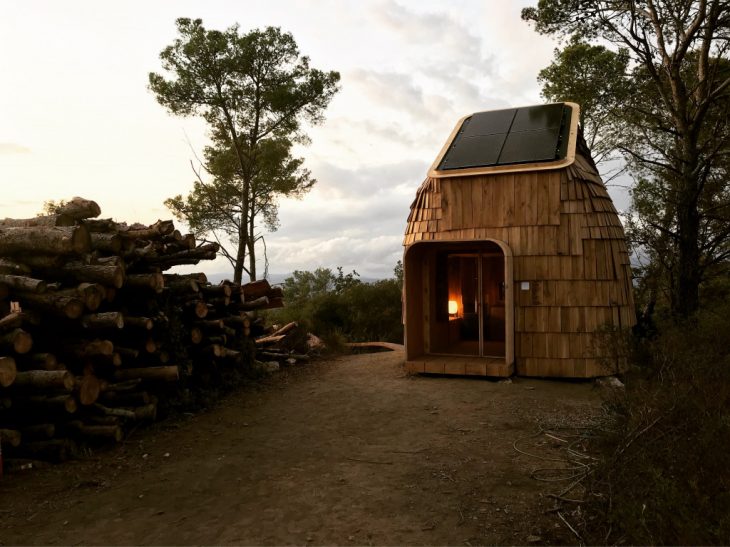
This prototype showcases many inclusive, innovative, environmentally aware and self-sufficient solutions, including:
– An integrative design, synthesizing inputs from across the diverse building cultures and systems of our international student body
– A fully traceable primary structure, fabricated completely from zero km pine harvested from the Valldaura forest
– Translation of a low tech, universally established shingling system into a morphologically responsive, materially optimized envelope using advanced computation,and fabricated from zero km oak harvested from the Vallldaura forest
– Fully off grid and self sufficient metabolic systems
The 2019 Advanced Ecohouse V01 is a Tiny House proposing many big ideas, including a more ecologically aware system of design, construction and lifestyle.
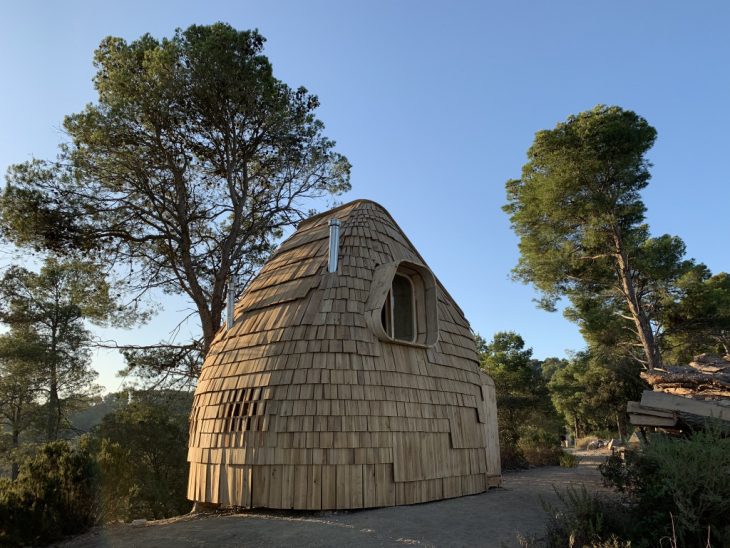
One of the significant factors in the design and construction of the Prototype Tiny House is the conscious effort to reduce the building’s ecological footprint through intelligent solutions in material use, transport and production. MAEB is very proud to have made advantageous use of a harvest of timber from the Valldaura forest this year, to produce the Tiny House structure and envelope.
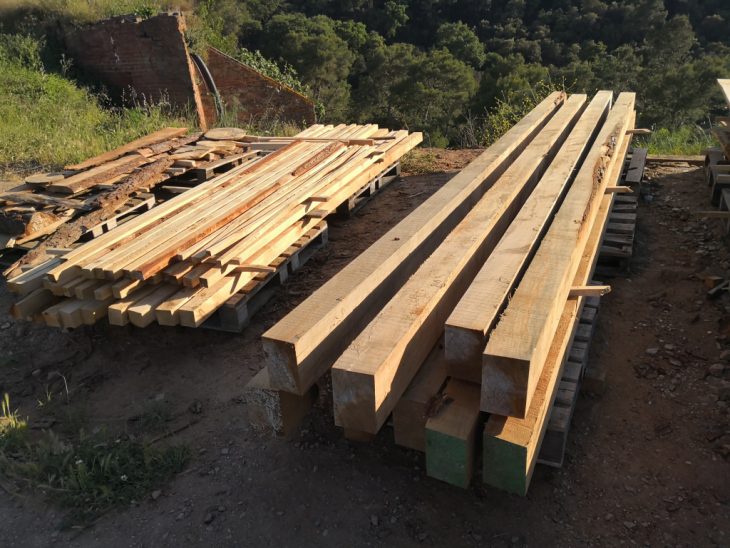
In addition to being zero km materials, the design further reduces the ecological footprint by limiting the processing and production of materials to local sponsors such as Tallfusta, or in-house production at the Valldaura Labs carpentry and fabrication lab. The result is locally harvested, locally processed and internally produced timber pieces which are beautiful, both because of the valuable timber, but also because of the system through which they were produced. Furthermore, we are proud to be able to trace each structural piece, back to the exact location and specimen of tree it originated from.
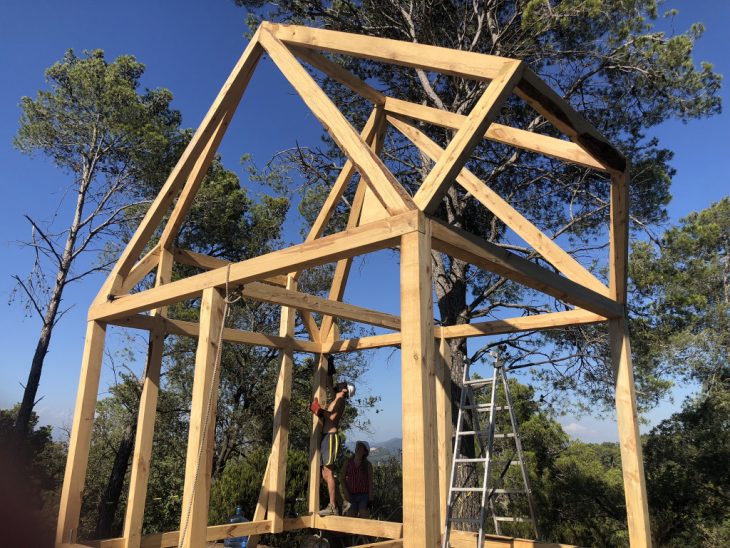
The Prototype Tiny House also privileges a fully off-grid energy system, supported by 4 PV panels sponsored by Saltoki. A dry toilet that composts waste through microbiomes is showcased for the first time in this project, installed and sponsored by Permapreta. The house’s grey-water system is facilitated by Alter-Entorn and much of the water and thermal insulation was sponsored by Saneseco. All of these elements together ensure a fully off-grid energy system, intelligent grey water solutions, and an ecologically aware human waste system.
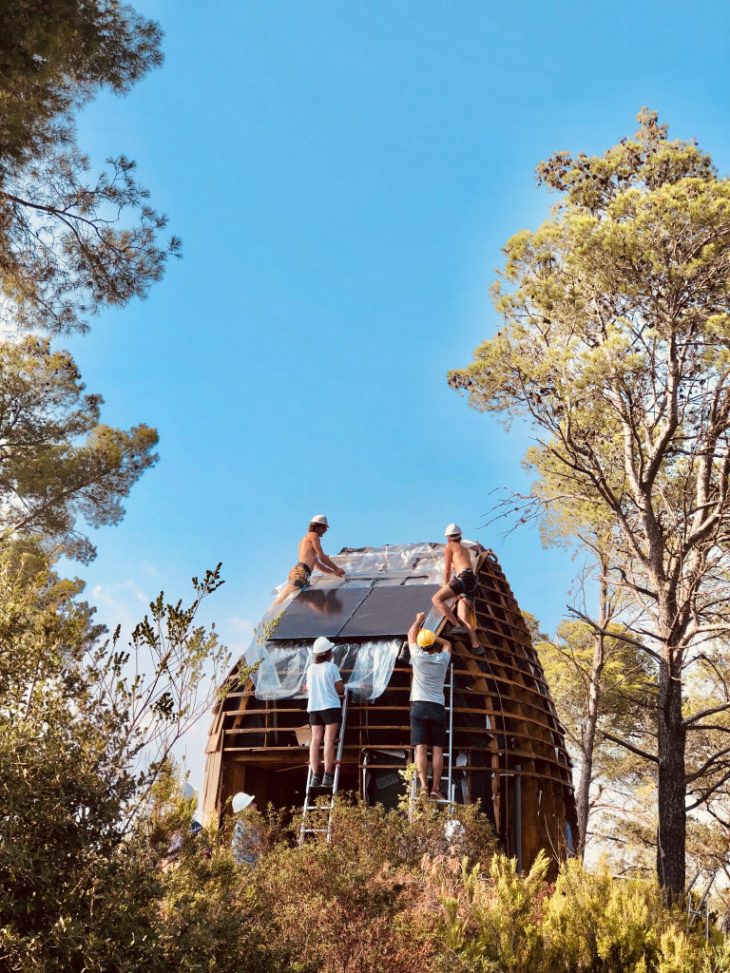
The metabolic system incorporates water, energy and information into one integrated system that serves the overall design. A system-based design allows for adaptations regarding local stipulations and client preferences. The metabolic equipment can be found between the skin and structure, opening up more space on the interior for living. The current prototype is designed to work off-grid with a photovoltaic installation of 900 watts. Powerful enough to charge the tiny house’s batteries to store excess energy and then used for three days without sun.
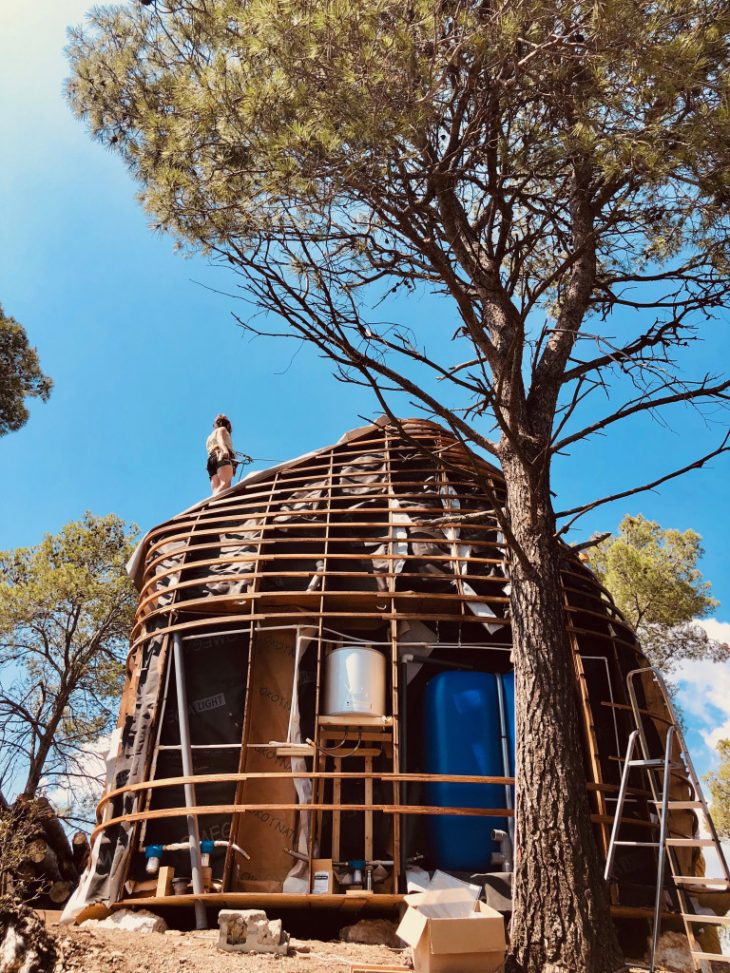
The daily average consumption of a Catalonian per day is 150L. With a diverting composting dry toilet, this number reduces to 62L per day. The toilet composts in situ with the help of earthworms. The final composted material also known as black gold, is a rich fertilizer extracted every three years. Urine is mixed with water to compensate for the levels of nitrogen and oxygen. This mixture flows into the grey water system and treated by a garden before being released into the soil The water system is sized for 14 days of self-sufficiency before the water tanks need refilling. Rainwater harvesting is offered as an additional option depending on the amount of water that can be captured.

Every centimeter of the Prototype Ecohouse produces information that can be analyzed and benefited from. The entire home is designed for the user to learn and connect with their place of living and the surrounding environment.
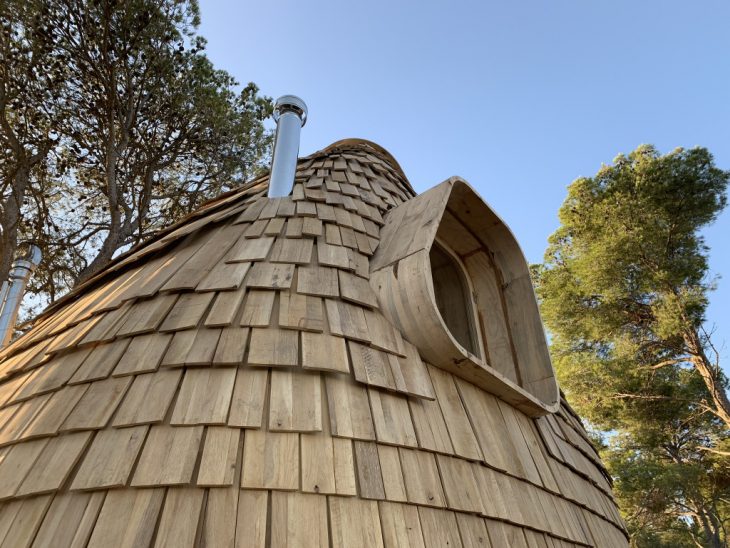 Project Credits
Project Credits
Student Designers Pilar Aguirre, Giulia Astrachan, Jesús Bueno Anguita, Julianna Carmona, Vincent Charlebois, Chen Yu-Wen, Chiang Yu-Ching, Pablo Corroto Pradillo, Nour El Kamali, Elisabet Fàbrega R. Roda, Kevin Matar, Qiao Liang, Jorge Luis Morales Fernández, Sinéad Nicholson, Michael Salka, Tian Yuanpei, Yu Zhipeng, Zhang Jie, Zu Heran.
IAAC President | Xavier Marcet
MAEB Directors | Vicente Guallart and Daniel Ibañez
Operations Management | Laia Pifarré
Academic Coordination | Marziah Zad
CA Oversight | Daniel Ibañez, Marziah Zad, Michael Salka.
Project Manager | Michael Salka.
Digital Fabrication and Prototyping Strategies | Nicolò Gnecchi.
Thank you to our Sponsors Visoren, Tallfusta, Saltoki, Premapreta, Distribució Sostenible, Alter-Entorn, Saneseco, Santa & Cole, Noumena, Mausa, Philips.
Consultation Oscar Aceves, Miquel Rodriguez, Jochen Scheerer, Luis Casado, Gustavo Torralbo, Laura Halminen, Nicu Pribago, Guillem Camprodon, Rodrigo Aguirre, Luis Sola, Gustavo Abreu
Support and Assistance
Valldaura Labs Staff and Faculty // Laia Pifarré, Marziah Zad, Nicolò Gnecchi, Jonathan Minchin. Jose Antonio Riosalido, Xavier Molons, Jordi Ubach, Francesc Val.
IAAC Fablab Staff // Mikel Llobera, Ricardo Valbuena, Alaa Al Baroudi.
Thanks to Volunteers Chelsea Sherman, Seçil Afs?ar, Pan Youjian, Tristan Copley,
Banjaman Scatt, Rutvij Patha, Alejandro Caballero, Demi Pradolin, Judy Mahfouz, Alec Nicholson